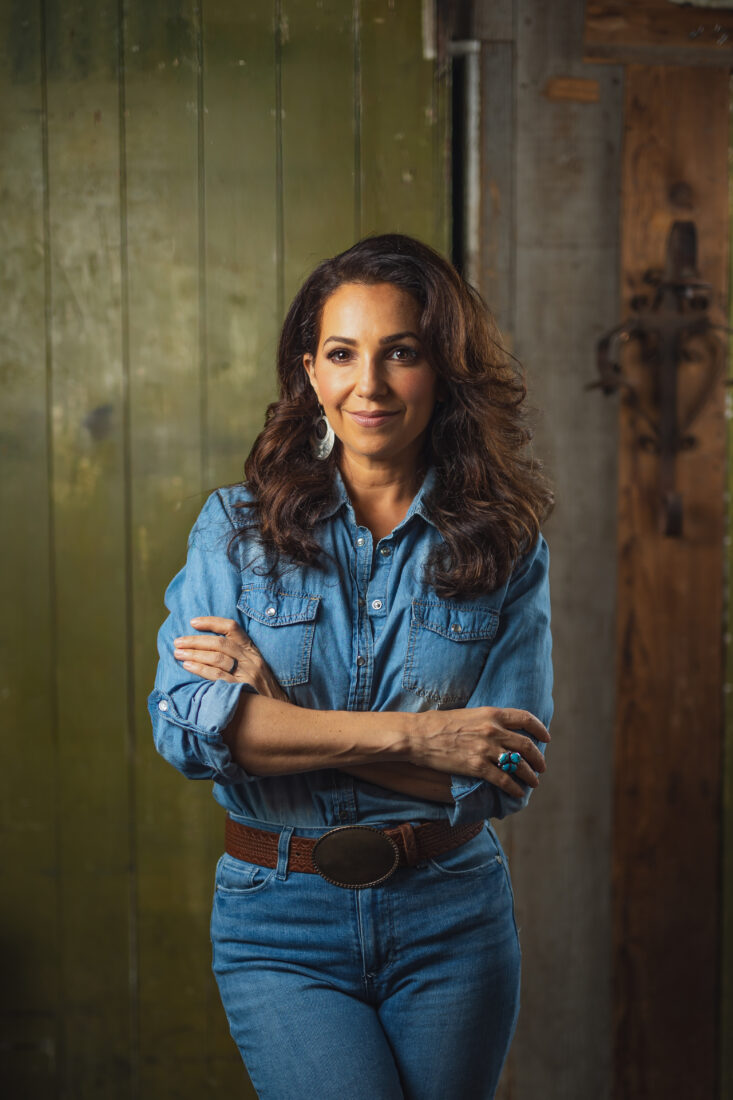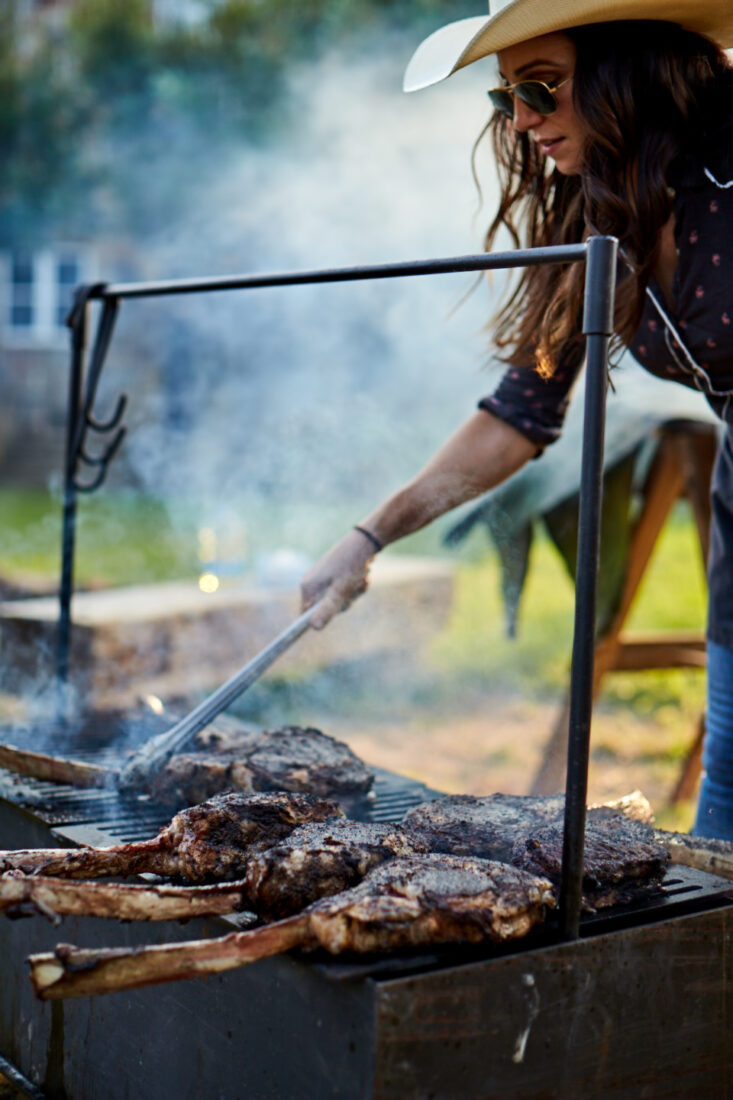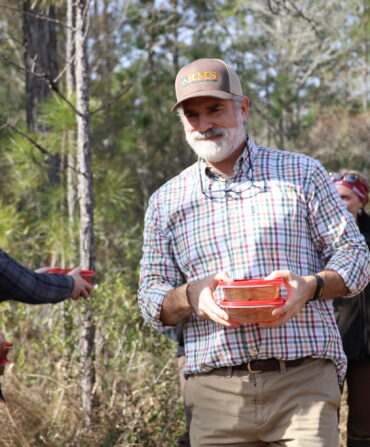In 2015, at the now-shuttered Artz Rib House on South Lamar in Austin, Texas, an unsuspecting Australian tourist named Jess Pryles was about to have one of those, as she puts it, “absolutely life-changing experiences where the clouds part and the heavens open.” ’Cueing, so to speak, this pivotal moment was a humble rack of beef ribs, barely meaty. “There was something about the peppery crust and smoky-crunchy membrane that awakened my tastebuds,” she says. She followed the trail of smoke straight into a new obsession.

Now based in Austin herself, Pryles is a leading voice in live-fire cooking, blending pitmaster savvy with scientific precision. In a field still dominated by men, she has earned her place with years of butchery and a graduate certificate in Meat Science—the study of meat quality and safety—from Iowa State. She’s the host of Hardcore Carnivore on the Outdoor Channel and speaks at Texas A&M’s Camp Brisket, where her expertise draws both seasoned pros and curious home cooks. Still, she doesn’t see herself as a chef or a scientist. “Sometimes I feel like I sit in this weird no-man’s land,” she says.

Just in time for grilling season, we asked the eponymous hardcore carnivore—who eats meat daily out of sheer craving—for science-backed intel on cooking the ultimate steak. From sear technique to the squishy little metaphor behind a juicy, well-rested cut, Pryles assures proudly intuitive Southern cooks that basic know-how matters. As she puts it, “Meat science has so much to do with bringing you an incredible steak.”
Cut Above
In pursuit of a superlative steak, set yourself up for success with a decently marbled cut. Fat doesn’t just add juicy, buttery flavor—it’s also softer than muscle, which means a more tender bite. Pryles reveres ribeye for this reason but also favors the fat-capped picanha of Brazilian steakhouse fame and the often-overlooked flat iron, which is almost as tender as a filet but cheaper and more flavorful. “Serious beef people don’t eat filet,” she says. Whether to choose grass- or grain-fed beef is a matter of preference. Grass-fed may offer a few extra nutrients, depending on pasture quality, but it’s often leaner and less satisfying. “Don’t sacrifice the eating experience just to have grass-fed beef,” Pryles says.
New Aging
Like it or not, meat goes through rigor mortis, which tightens the muscle. Post-mortem aging undoes that rigidity by giving natural enzymes time to break down the tissue. Pryles likens the dry aging of Flintstone-size subprimals—strip loin roasts, ribeye racks—in open-air refrigeration to other complicated food-preservation methods that may also involve mold. “It’s not easy to do well,” she says. For smaller, freshly portioned steaks, she favors wet aging in vacuum-sealed bags. “This method will tenderize that steak over seven to fourteen days in the refrigerator without you having to do anything but sit and watch it.”
Prep School
One telltale sign of a good steak is a quality sear. A couple of key moves help build that flavorful crust, which is the result of the Maillard reaction—a chemical process when heat transforms amino acids and sugars into deep, savory flavor. First, take the chill off the meat by letting it sit at room temperature for about 45 minutes, which helps it cook more evenly. (If you’re planning ahead, salt it and leave it uncovered in the fridge for up to 24 hours. “Brining binds water for juiciness,” explains Pryles, “and lets salt penetrate more deeply for flavor.”) Next, blot the surface dry with a paper towel, since moisture is the enemy of sear. At this point Pryles will also apply Hardcore Carnivore Black, her signature seasoning blend with activated charcoal to intensify the crust.

Flip Side
Since Pryles is unapologetically impatient when it comes to eating steak, she’s adopted a quick-cooking method she calls “Just Keep Flipping,” or JKF. Unlike the popular reverse sear—which involves a slow cook in the oven or via sous vide, then a flash sear over high heat—JKF requires flipping the meat every 30 seconds over a grate that’s six to ten inches above a smoldering, but not fully ashed-over, pile of Kingsford briquettes. Frequent flipping dries the surface faster, helping the meat cook evenly and build that signature Maillard crust.
Take Five
When Pryles swapped the “pinch test”—comparing the cooked steak to the firmness of your thumb’s fleshy base—for the precision of a thermometer, she says, “It gave me the confidence to cook steaks that I used to avoid.” Her target temperature depends on the cut: 130 to 135 degrees Fahrenheit for a medium-rare, one-inch-thick ribeye; 138 degrees for a barely-medium tri-tip. Her take on resting meat for up to five minutes after cooking comes down to preference: “Do you like your steak hot or juicy?” asks Pryles, who’s more often in the former camp. If you’re in the latter, here’s what’s happening: “When the meat heats up, the muscle tightens and that pushes out some of the juices,” she says. “It’s like squeezing a sponge that still has water in it. As the meat rests and relaxes, the juices can settle back in.”








